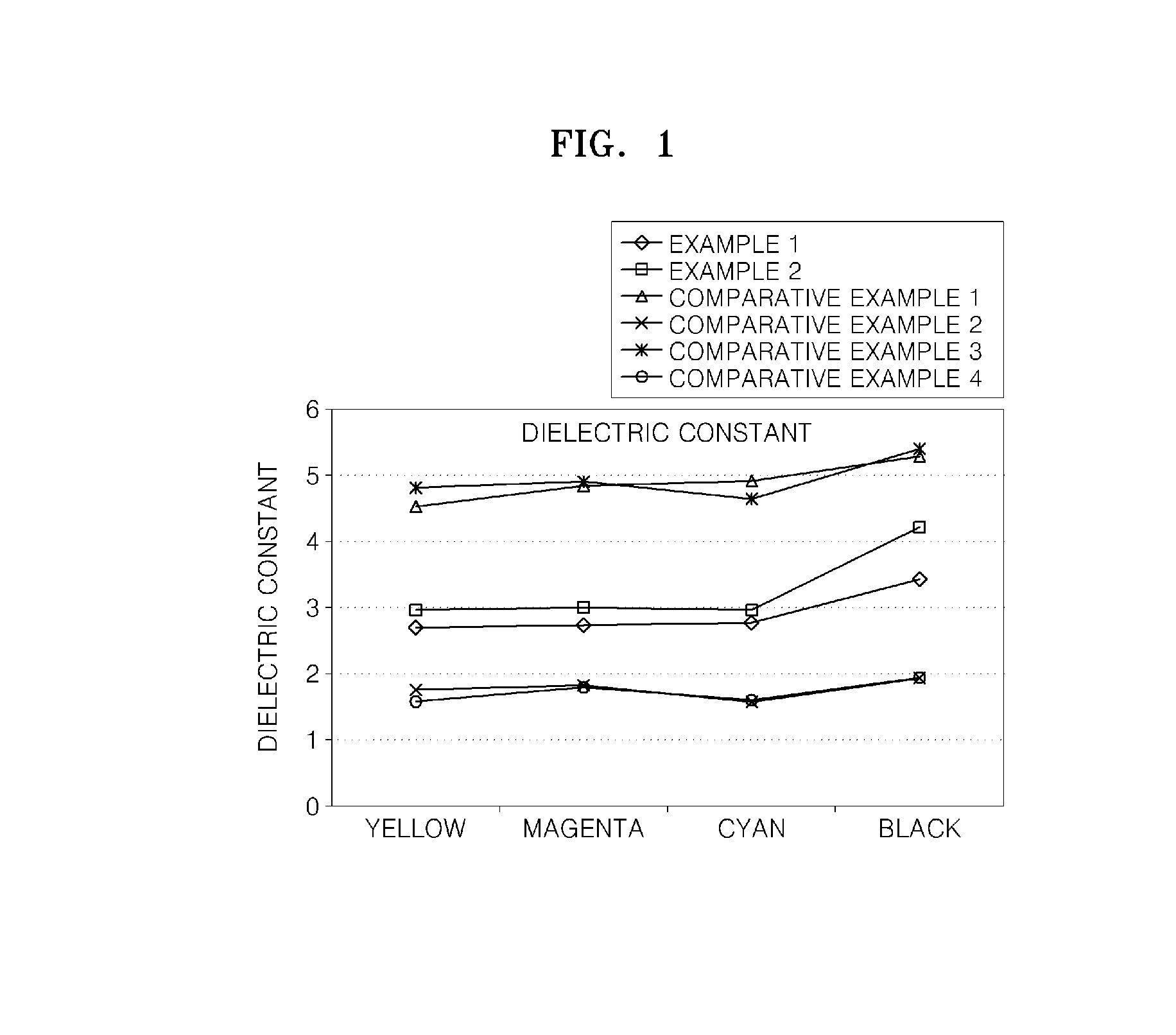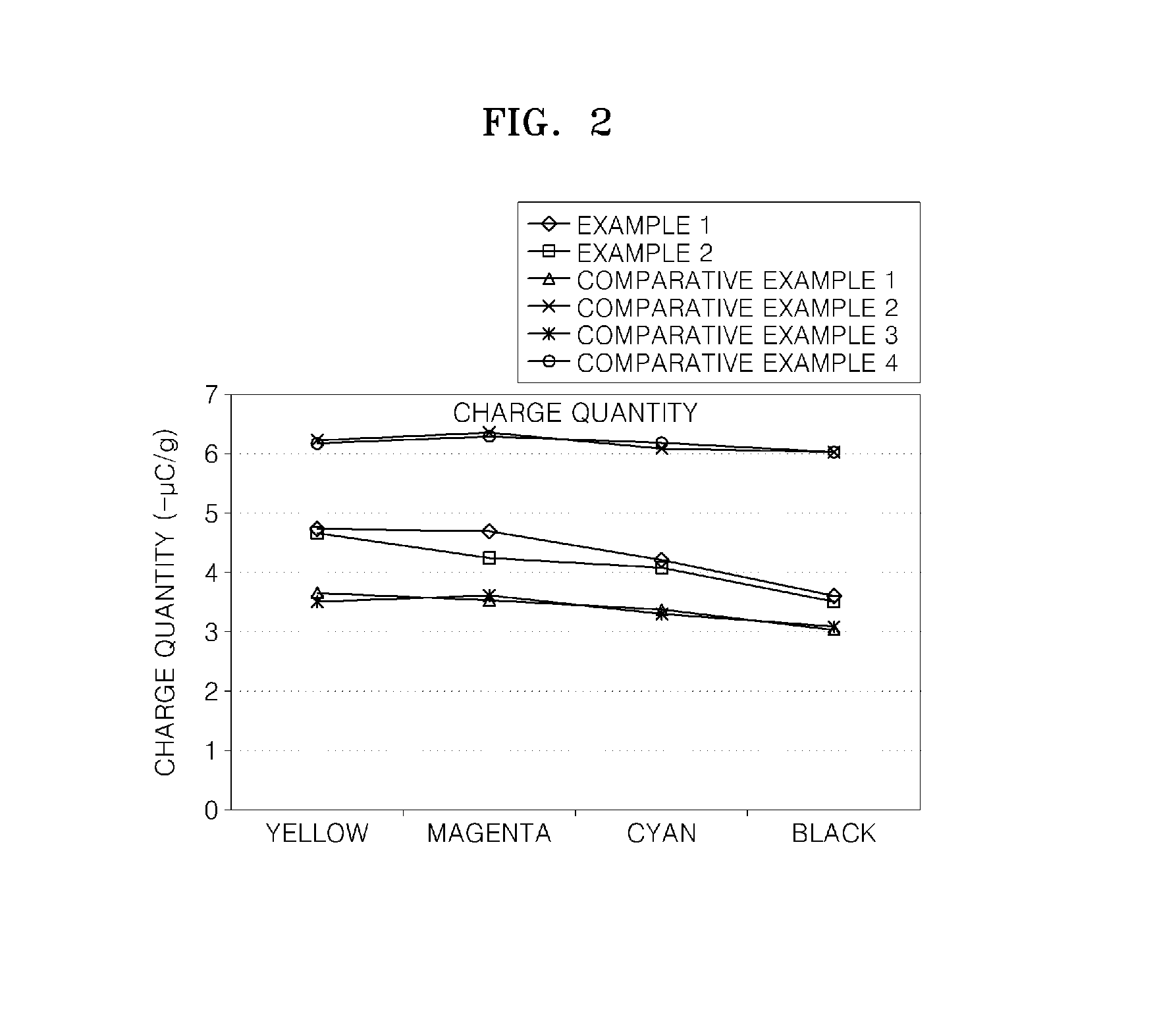Polymerization toner for electrostatic developing
a technology of toner and electrostatic development, applied in the field of polymerization toner, can solve the problems of poor colorant dispersion, poor transfer from photoreceptor, image omission, etc., and achieve the effects of high quality, small printing cost, and superior chargeability and storage stability
- Summary
- Abstract
- Description
- Claims
- Application Information
AI Technical Summary
Benefits of technology
Problems solved by technology
Method used
Image
Examples
example 1
[0104](Preparation of Latex for Core and Shell)
[0105]A 30 L reactor equipped with a stirrer, a thermometer, and a condenser was installed in an oil bath in which oil is a heat transfer medium. 6,600 g of distilled water and 32 g of a surfactant (Dowfax 2A1) were added to the reactor, and the reactor was heated to 70° C. and stirred at 100 rpm. Then, an emulsion mixture, including monomers, i.e., 8,380 g of styrene, 3,220 g of butyl acrylate, 370 g of 2-carboxyethyl acrylate, and 226 g of 1,10-decanediol diacrylate, 5,075 g of distilled water, 226 g of the surfactant (Dowfax 2A1), 530 g of polyethylene glycol ethyl ether methacrylate, as a macro monomer, and 188 g of 1-dodecanethiol, as a chain transfer agent, was stirred at 400 rpm to 500 rpm for 30 minutes using a disc-type impeller. Then, the emulsion mixture was gradually added to the reactor for 1 hour. The reactor was maintained for about 8 hours and gradually cooled to room temperature to complete the reaction.
[0106]The glass ...
example 2
[0116](Synthesis of Polyester Resin)
[0117]A 3 L reactor equipped with a stirrer, a nitrogen gas inlet, a thermometer, and a cooler was installed in an oil bath in which oil is heat medium. 45 g of terephthalic acid, 39 g of isophthalic acid, 75 g of 1,2-propylene glycol, and 3 g of trimellitic acid were added to the reactor. Then, dibutyl tin oxide was added thereto as a catalyst at a ratio of 500 ppm with respect to the total weight of the monomers. Then, the reactor was heated to 150° C. while stirring the mixture of the reactor at a speed of 150 rpm. The reaction was maintained at the same temperature for about 6 hours, and the reactor was heated to 220° C. The pressure of the reactor was reduced to 0.1 torr in order to remove byproducts, and the reactor was maintained at the same pressure for 15 hours to complete the reaction. As a result, a polyester resin was obtained.
[0118]Glass Transition Temperature (Tg, ° C.) Measurement
[0119]A glass transition temperature Tg of a sample w...
PUM
| Property | Measurement | Unit |
|---|---|---|
| dielectric constant | aaaaa | aaaaa |
| volume average particle size | aaaaa | aaaaa |
| dielectric constant ∈ | aaaaa | aaaaa |
Abstract
Description
Claims
Application Information
 Login to View More
Login to View More - R&D
- Intellectual Property
- Life Sciences
- Materials
- Tech Scout
- Unparalleled Data Quality
- Higher Quality Content
- 60% Fewer Hallucinations
Browse by: Latest US Patents, China's latest patents, Technical Efficacy Thesaurus, Application Domain, Technology Topic, Popular Technical Reports.
© 2025 PatSnap. All rights reserved.Legal|Privacy policy|Modern Slavery Act Transparency Statement|Sitemap|About US| Contact US: help@patsnap.com



